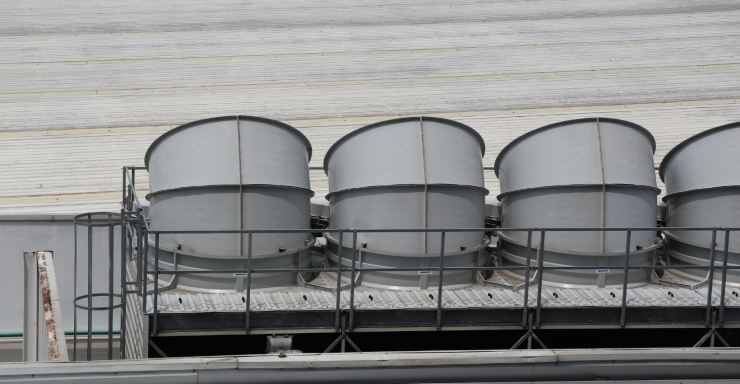The design process is complete on an effort projected to save the University more than 25 million gallons of water annually. UK’s annual water usage averages 600 million gallons a year so the savings from this project represent more than a 4% reduction in purchased water. The project will divert stormwater for use in one of the University’s cooling towers replacing water historically purchased from Kentucky American Water. The project will also benefit downstream water quality by reducing the stormwater surge that occurs during rain events and by removing the pollution that this water has picked up as it flows across roofs, parking lots, and other impervious surfaces. Decreasing pressure on the stormwater infrastructure will also benefit the neighborhoods in this part of the Wolf Run watershed by reducing the potential for stormwater overflows.
UK’s Utilities and Energy Management (UEM) division is leading the project which was made possible by a grant from Lexington’s Stormwater Incentive Program that provides 80% of the project cost. UEM is funding the remaining portion of the budget. The Stormwater Incentive Grant Program is funded by a fee paid by all property owners in Fayette County and the fee is based on the amount of impervious surface on the property. This Stormwater Harvesting project is the second major effort in recent years that UK has carried out using these grant funds. The other was a stream restoration project on Alumni Drive near UK Athletics’ Wendell and Vicki Bell Soccer Softball Complex.
What is a cooling tower and why does it need 20 million gallons of water each year?
UK provides air conditioning to campus facilities using a chilled water loop. The water is cooled in industrial sized chillers, and the heat is eventually rejected to the atmosphere through evaporative cooling towers that are very water intense. Here is how that process works.
Once complete, the project is projected to pay for itself in a matter of months. UEM has also designed the project to be an educational asset for related UK courses and student projects, community members, and other entities that are interested in this type of utility infrastructure project. The pump station that will harvest the stormwater will be located just south of the Press Avenue Parking Garage. After passing through a filtration system to remove pollution, the water will be pumped to the cooling towers at the Central Utility Plant. The stormwater in the culvert at this point comes from an approximately 200 acre portion of south campus that drains to Wolf Run Creek, a tributary of the South Elkhorn Creek which flows to the Kentucky River.
While this is one project with a big impact, UK is a 50,000+ community where thousands of individual acts add up to big impacts too. Here are some things you can do that will have a positive impact on water:
- Pick It Up! Litter on the ground often ends up as pollution in our water ways. If you see litter on campus, pick it up. Trash and recycling containers are co-located across our campus.
- Refill it! Carrying your own water bottle has many positive impacts including saving you money and reducing single-use plastics which are one of the most common and long lasting sources of pollution.
- Bag the poo! Pet waste pollutes waterways and can be a nuisance and health hazard for those exposed to it. If you have a pet, be sure to bag and properly dispose of the poo.
- Volunteer! There are many organizations that routinely conduct stream clean-ups and monitor water quality. Here are two quick options to get you started:
- Kentucky River Clean Sweep – https://www.lexingtonky.gov/riversweep
- Kentucky River Watershed Watch – https://www.krww.org/



























